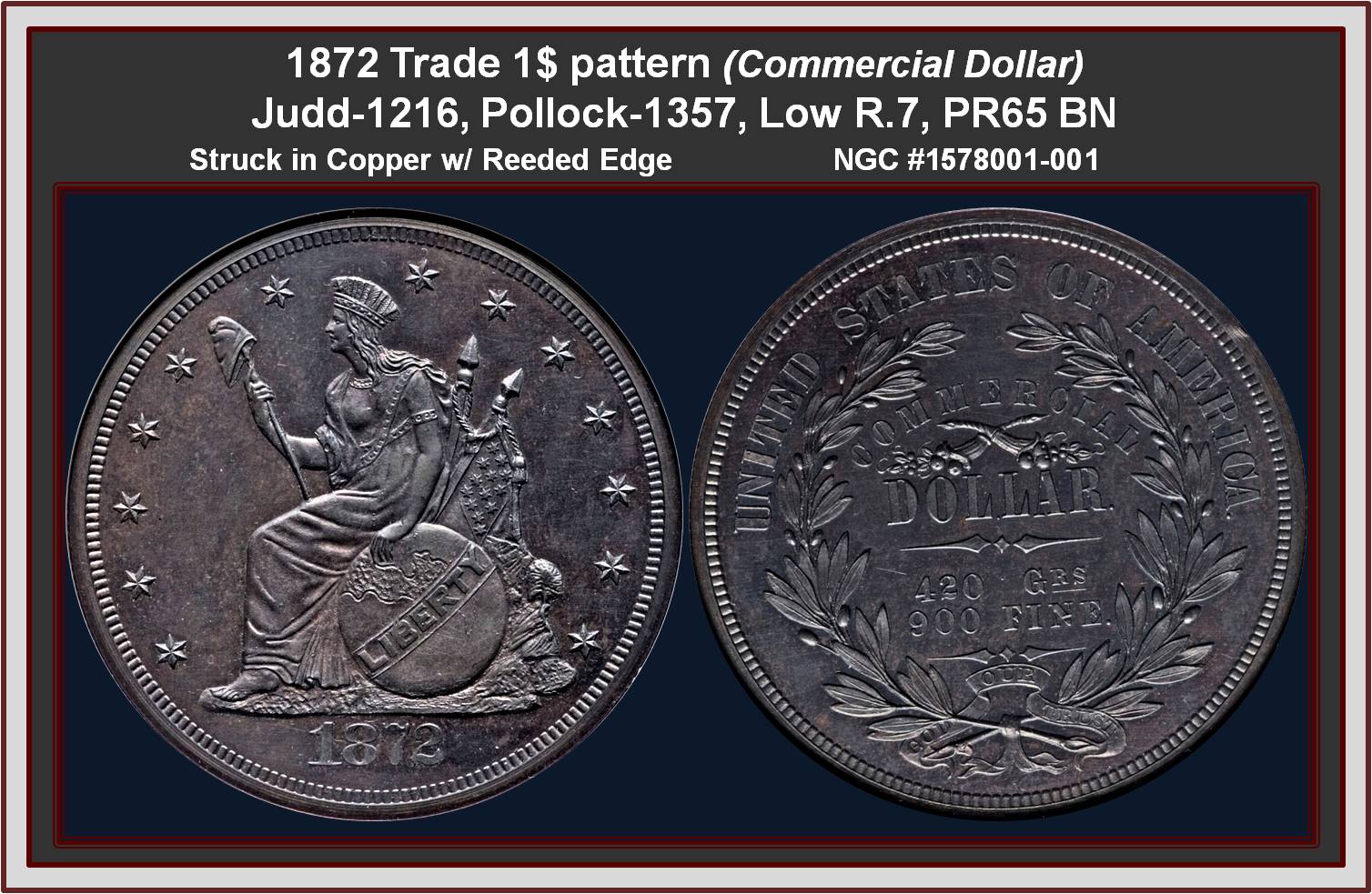Owner Comments:
 1872 $1 Commercial
1872 $1 Commercial
Judd-1216, Pollock-1357
Rarity: Low R.7 PF65BN
Struck in copper with a reeded edge.
Obverse: Liberty is seated on a world globe, inscribed LIBERTY, facing left, and wearing an Indian headdress. The date 1872 is below and 13 stars surround the top. Liberty is holding a pole topped by a Phrygian cap in her right hand and her left hand is along her side resting on the globe. Two flags flank her with one displaying 13 stars.
Reverse: The reverse has UNITED STATES OF AMERICA above an olive wreath. GOD OUR TRUST is below the wreath on a scroll, and within the wreath are the legends COMMERCIAL / DOLLAR / 420 GRs / 900 FINE Two cornucopias are crisscross between the words COMMERCIAL and DOLLAR
Comment:. USPatterns.com estimates that about a half dozen copper strikings are known today. Deep blue-gray patina barely covers the underlying mint red. Fully struck throughout.
This the William Barber's lower-relief adaptation of James B. Longacre's Indian Princess design, used posthumously after Longacre's death on January 1, 1869. There were a few differences one being only 13 stars in the flag vs. Longarce’s 22. Of note is that about ½ of the stars are double punched and some being significantly off center.
Provenance/Appearances:
Private Transaction Prior: From The Siegel Collection,. Heritage April 2017 CSNS Chicago / Lot #5112 ,
Possible Bowers & Merena Jan 1997 (Rarities Sale) / Lot #479;
Possible Bowers & Merena Nov 1995 (Rogers Fred and Peter Ward, M.D. Collections) / Lot #2326
--------------------------------------------------------------------------------
I like to add the following - Numismatic Reflections by Q. David Bowers
The Commercial dollars are very special patterns. They are the work of John Jay Knox, himself a numismatist, who crafted the wording for the Coinage Act of 1873. This was endorsed by Congress and passed easily. Some years later, when the price of silver dropped on world markets, and western mining interests suffered because Uncle Sam wasn't buying enough metal in quantity to support the market, the bill was called the "Crime of 1873." But, careful reading of it will show that it was well thought out. ��Not to worry, some years later in 1878 the western mining interests triumphed, influenced Congress to enact the boondoggle Bland-Allison Act, and the government began buying millions of ounces of unwanted silver metal each year and coin them into what we now know as Morgan dollars. There was no commercial need for dollars at the time, as they circulated only in a few places and not in quantity. Accordingly, hundreds of millions of them piled up in Treasury vaults. This turned out to be an absolute delight for numismatists of generations later, as now Mint State Morgan dollars are very plentiful, at least for the majority of issues. Incidentally, the very same thing is happening today with Presidential dollars and Sacagawea dollars-zillions of them are being minted, they are not seen in circulation, and somewhere vaults must be bulging with them!